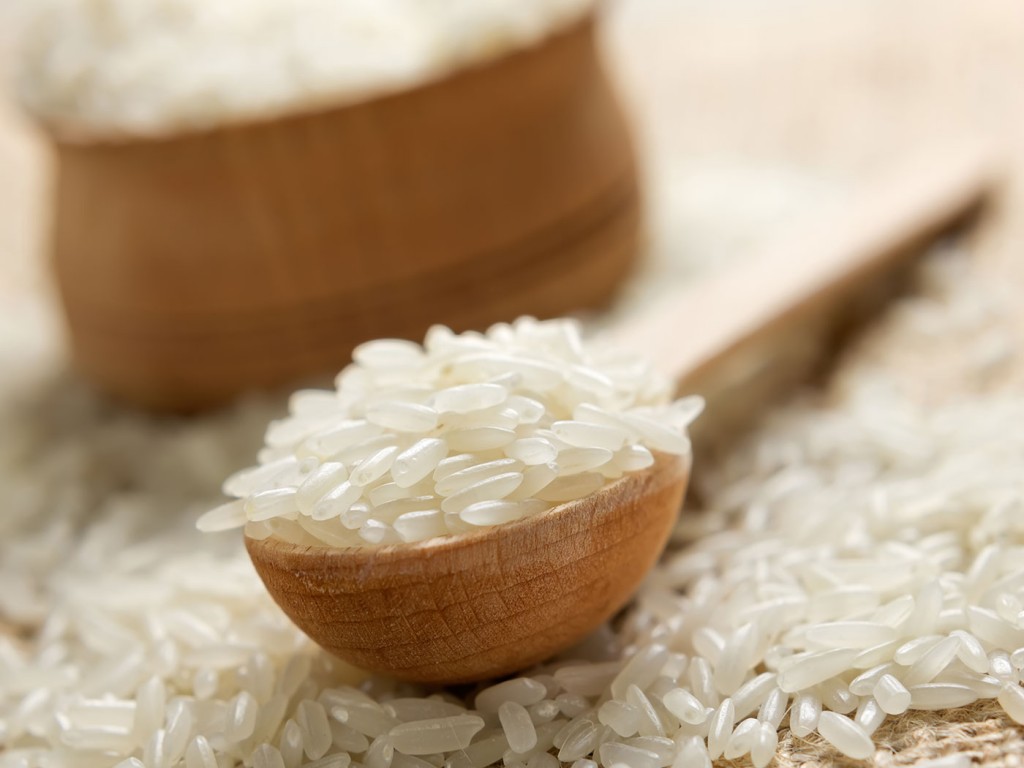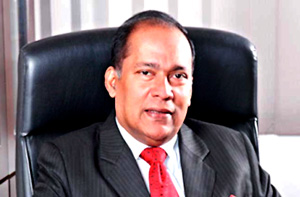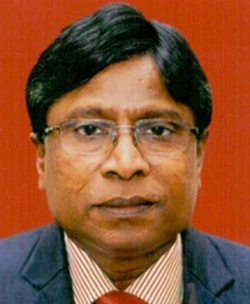19 Jun 2017 - {{hitsCtrl.values.hits}}
What is all the controversy about?

 Social media was abuzz over a video claiming that Lanka Sathosa was responsible for the sale and distribution of a variety of rice dubbed ‘plastic rice’. The viral video claimed that a type of rice labelled ‘Imported Basmati Rice’, purchased from a Sathosa outlet in Pitakotte did not stale even after 24 hours had lapsed since its preparation. The highlight of the video however, was when the lady appearing in the video made a ball of the cooked rice and dropped it on the floor. The rice ball which hit the floor with a thwack, did not crumble and appeared to remain in the shape of a ball.
Social media was abuzz over a video claiming that Lanka Sathosa was responsible for the sale and distribution of a variety of rice dubbed ‘plastic rice’. The viral video claimed that a type of rice labelled ‘Imported Basmati Rice’, purchased from a Sathosa outlet in Pitakotte did not stale even after 24 hours had lapsed since its preparation. The highlight of the video however, was when the lady appearing in the video made a ball of the cooked rice and dropped it on the floor. The rice ball which hit the floor with a thwack, did not crumble and appeared to remain in the shape of a ball.
Local social media users are already divided into camps, with a majority convinced that this particular variety of rice was indeed made of plastic. Some online gurus on the other hand assert that the campaign was a hoax, as cooked rice starch can create adhesiveness similar to glutinous rice, better known as ‘sticky rice’. After the initial video, several more videos have emerged showing bouncing rice balls, which some users argued was an effect caused by the volume expansion and air entrapment in cooked rice.
Following these reports, the sale and distribution of the controversial consignment of rice imported from Pakistan was suspended with immediate effect on Monday. Lanka Sathosa Chairman T.M.K.B. Tennekoon who appeared to be convinced that the campaign was launched by a group with vested interests, said a complaint would be filed at the Criminal Investigation Department to probe the matter. The samples of rice were sent to the Medical Research Institute for further testing. “It will take a minimum of two weeks to receive the report. Until then we will not sell the ‘Basmati’ rice imported from Pakistan,” he said.
Meanwhile the Ministry was compelled to issue a statement in response to the online uproar. It held that the recent consignment of ‘Basmati’ rice imported from Pakistan by the state retail giant was suitable for consumption. The statement added that 20 metric tons of rice was imported on May 15, which had been processed through stipulated protocols of quality assurance prior to its release to the market.
Following the heated public debate on food security, the Daily Mirror spoke to several individuals of varied expertise to query the progress of investigations into the matter.
 ‘Test reports by the end of the week’Chairman, Consumer Affairs Authority
‘Test reports by the end of the week’Chairman, Consumer Affairs Authority
- W.Hasitha Tillekeratne
“Over the past five days, we have received many complaints over the sale of plastic rice. Accordingly, our officers have collected seven or eight samples of rice alleged to contain plastic from the places where we received complaints.
These samples have been sent for testing and we will continuously monitor the process. We will receive the reports of the tests conducted on a priority basis and we expect them by the end of this week.
Meanwhile, we have ordered commercial outlets which were selling the suspected stocks of rice to suspend the sale of that particular type of rice.”
‘Rumours may attempt to disrupt sale of imported rice’President, National Movement for Consumer Right’s Protection - Ranjith Withanage
“A sample of the suspected stock of plastic rice has been sent for lab testing by the CAA. We will have to deliberate the matter further once the report comes through. For the moment, we cannot afford to cause alarm among consumers.”
“We are doubtful of these rumours as they might be an attempt to disrupt the sale of imported rice or might even be a story fabricated with the intention of increasing wheat flour consumption in the country. Therefore, we will await the results of the lab test to decide our course of action.”
“If we are not satisfied with the test results, we will proceed with alternative testing methods following discussions. For now, we wanted to suspend the sale of the particular stock of rice until we ascertained the truth.”
Meanwhile in a statement released yesterday the NMCRP demanded the Director General of Health Services to declare his stance on the controversial stock of rice issued by Sathosa outlets. It said only the Sathosa Chairman has made his views clear adding that the silence by the authorities of food security poses an ethical question. The movement called for the immediate investigation of the plastic rice controversy in order to guarantee the health and wellbeing of Sri Lankan consumers, a service which falls under the purview of the Director General of Health Services.
‘Three ways to identify plastic rice’CMC City Analyst
– R.M.G.B. Rajanayake
"Plastic rice is lighter than organic rice. This is not in terms of weight but if a handful of rice is put into a bowl of water, organic rice will sink, while plastic rice will float. Another way of identifying it is to crush and boil the rice. This solution has to be cooled. A drop of iodine or Betadine added to this solution would make an organic rice solution blue. Only starch gives the blue colour to iodine. If the solution does not turn blue, it is not organic rice."
“You can also test the rice at home by burning it. Burning rice will give it the familiar smell of burnt rice, while plastic rice will smell of burnt polythene or plastic. These are a few methods that can be used at home to test the rice. We also have facilities to identify plastic rice, as there is a special characteristic structure for organic rice."
Asked how the public may seek assistance to identify rice, Mr. Rajanayake said those who were suspicious of a particular variety of rice could lodge a complaint with their respective Public Health Inspector or food inspector. "Residents of Colombo can also lodge a complaint with Colombo Municipal Council Central Food control Unit or Inform to the Food Authority of the Local area of Colombo Dr. Ruwan Wijayamuni, Chief Medical officer of Health, Public Health Department,” he said.
 ‘Creators of video not willing to make an official complaint’Director General, Health Services
‘Creators of video not willing to make an official complaint’Director General, Health Services
- Dr. Jayasundara Bandara
“We have not received an official complaint thus far. We attempted to contact the individuals who created the video and asked them to lodge an official complaint in order to solve this issue. But these groups have not come forward and are hesitant to give us a statement. We are now under the impression that this is a false report.”
“Since reports of a sale of plastic rice surfaced this year, we have taken samples from every imported stock of rice to verify the quality of rice. Our Food and Drugs Inspectors release rice from customs only after conducting three tests and issuing a certificate. The samples are subjected to three tests, first soaking the rice in water and then crushing and heating before being given a quality assurance.”
“The samples from the Sathosa stock will be evaluated by the Medical Research Institute, where they will validate the substances. We are not sure if the rice contains plastic. But it is important to note that imported rice varieties are not of the same texture as locally grown rice. Some people are unnecessarily worried over the texture, which does not necessarily mean the rice is made of plastic.”
 ‘The matter has to be looked into’
‘The matter has to be looked into’
- Dr. Waruna Gunathilake, Former Head of the National Poisons Information Centre, National Hospital
“We have no reports concerning the consumption of plastic rice so far. Without verifying the chemical ingredients of this particular type of rice, we cannot comment on the matter. However it is a matter that has to be looked into, as it is a serious issue in food safety. If there are complaints, we should look into them to identify the substance.”
“He added that consumers who were concerned about the safety of this type of rice could seek the assistance of the National Poisons Information Centre. Consumers who suspect that the rice contains plastic can contact us at the NPIC, where we can help in identifying scientific details of rice samples.”
Plastic rice an international issue
Sri Lanka is not the first country to fall victim to the plastic rice controversy. Snopes, the internet reference source has been investigating misinformation since early 2011 along with social media rumours, which have asserted that plastic rice was being manufactured in China and exported and consumed by people in other countries. A simple search for ‘plastic rice’ on Facebook will reveal dozens of videos from a number of countries, showing the alleged manufacturing of plastic rice, its preparation and even people tossing balls of rice around.

Neighbouring countries such as India, Vietnam, Singapore and Indonesia have also reported accounts of the purported plastic rice controversy; unfortunately their claims were not substantiated. In response, governments countered the statements with official laboratory tests revealing no traces of plastics. Of course, the consumption of any faux food will pose grave danger to one’s health. Since the appearance of plastic rice rumours in 2011, no substantiated reports that successfully passed off plastic rice have appeared. However, in Sri Lanka the controversy appears to be here to stay and it is always advisable to rely on our own instincts to ascertain if the rice we buy is fit for our well-being.

Screengrabs of a video which allegedly shows the manfucturing of plastic rice
23 Dec 2024 47 minute ago
23 Dec 2024 2 hours ago
23 Dec 2024 2 hours ago
23 Dec 2024 3 hours ago
23 Dec 2024 4 hours ago